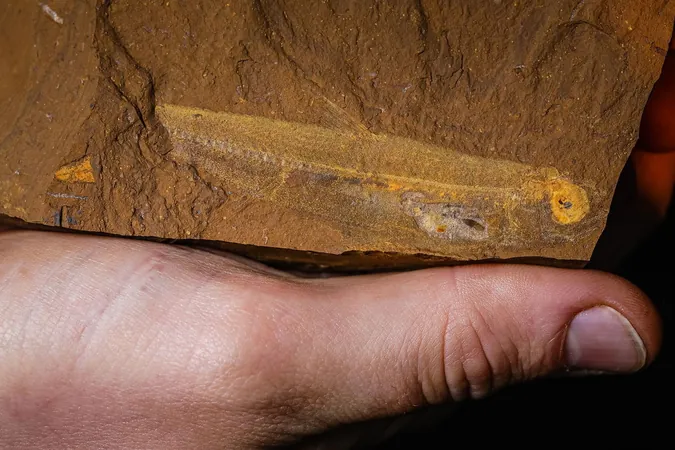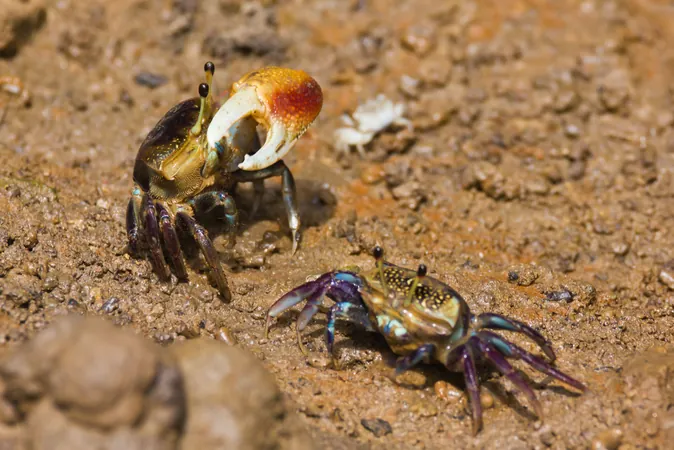
Incredible 16-Million-Year-Old Fish Fossil Discovered in Australia—Its Last Meal Revealed!
2025-03-28
Author: Ming
In a groundbreaking discovery, paleontologists have unearthed an exceptionally preserved fish species in Australia that is believed to be up to 16 million years old, dating back to the Miocene Epoch. This rare find not only highlights ancient aquatic life but also reveals the fish's last meal, providing unprecedented insights into prehistoric ecosystems.
The freshly identified species, named Ferruaspis brocksi, was excavated at the McGraths Flat site in central New South Wales. This research, published in the Journal of Vertebrate Paleontology, showcases how the fossilized remains were preserved in goethite, an iron-rich mineral, allowing scientists to explore remarkable details of the fish's anatomy, including soft tissues, stomach contents, and color patterns.
Dr. Michael Frese, an associate professor and virologist from the University of Canberra and coauthor of the study, expressed astonishment over the exquisite preservation of these fossils: “Every time I have a detailed look at a fossil from McGraths Flat, I am amazed by its detailed preservation. It’s extraordinary to determine the color of a fossil fish.”
Beyond the identification of F. brocksi, researchers have also documented the first comprehensive evidence of the Osmeriformes group—modern-day graylings and smelts—being present in Australia, thus filling a significant gap in the understanding of the continent's prehistoric biodiversity.
Peering into Prehistoric Diets
Using advanced microscopy, the research team meticulously analyzed the stomach and intestinal contents of F. brocksi. Remarkably, they found that this fish primarily dined on various phantom midge larvae—almost transparent insect larvae—alongside insect wings and even small bivalves. This discovery points to the complexity of the ancient food web, with Dr. Anthony Martin from Emory University noting that an understanding of the fish's diet helps researchers begin to reconstruct the ecological relationships of that era: “Knowing their diet helps us start to paint a picture of food chains and food webs in the original environments,” Martin emphasized.
One particularly fascinating finding was a freshwater mussel discovered attached to the tail fin of a fossilized fish. This outcome poses intriguing questions about the environmental conditions of the area, leading researchers to speculate on potential connections between the fossil site and nearby waterways.
Unraveling the Mysteries of Ancient Life
In addition to dietary habits, the presence of melanophores—pigmented cells in the fossils—offers a glimpse into the fish’s coloration. F. brocksi displays a slender body and remarkable countershading, being darker on top and lighter on its underside, which likely aided in predator evasion and suggests social behavior typically exhibited by fish.
The ecosystem around central New South Wales, now dominated by plains, was vastly different during the Miocene, featuring lush rainforests. The discovery of this species west of the Great Dividing Range indicates that, unlike most related fish today, F. brocksi may have lived exclusively in freshwater.
Dr. Frese concluded, “While this study revolves around one fish species, it’s a part of a much larger story we are piecing together through the excavation of fossils at this site.”
This significant find not only enriches our understanding of past life but also underscores the invaluable nature of paleontological research in reconstructing ancient environments and ecosystems. What else might these artifacts of deep time reveal about our planet's history? Stay tuned for more thrilling discoveries!



 Brasil (PT)
Brasil (PT)
 Canada (EN)
Canada (EN)
 Chile (ES)
Chile (ES)
 Česko (CS)
Česko (CS)
 대한민국 (KO)
대한민국 (KO)
 España (ES)
España (ES)
 France (FR)
France (FR)
 Hong Kong (EN)
Hong Kong (EN)
 Italia (IT)
Italia (IT)
 日本 (JA)
日本 (JA)
 Magyarország (HU)
Magyarország (HU)
 Norge (NO)
Norge (NO)
 Polska (PL)
Polska (PL)
 Schweiz (DE)
Schweiz (DE)
 Singapore (EN)
Singapore (EN)
 Sverige (SV)
Sverige (SV)
 Suomi (FI)
Suomi (FI)
 Türkiye (TR)
Türkiye (TR)
 الإمارات العربية المتحدة (AR)
الإمارات العربية المتحدة (AR)